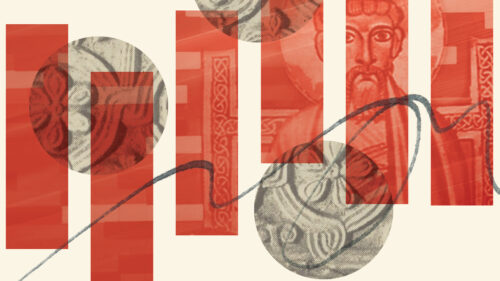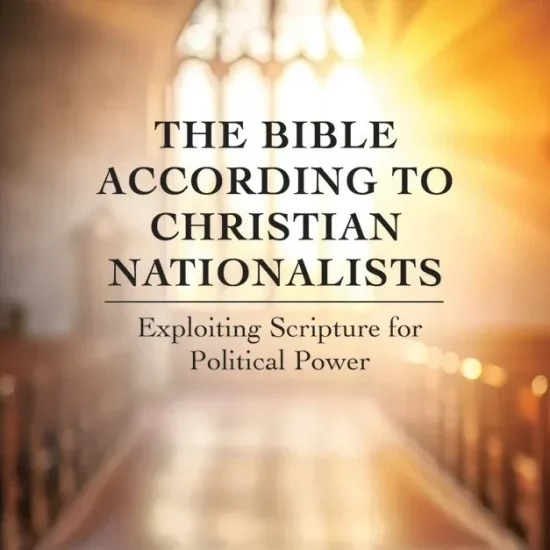

HEBREWS: Commentaries for Christian Formation. By Amy Peeler. Grand Rapids, MI: Wm. B. Eerdmans Publishing Company, 2024. XX + 482 pages.
When it comes to the New Testament Book of Hebrews, readers may find it compelling and at the same time a challenge to understand. We may find passages like Hebrews 11 with its definition of faith to be a powerful statement of what it means to have faith. Then there is the beautiful statement in Hebrews 13 about hospitality that can inform how we relate to strangers as Christians. At the same time, the parts of the letter that go into some detail as to the relationship of Jesus’s death on the cross to Temple rites can seem strange and off-putting. Then there are the passages that suggest that the old covenant is obsolete and has been replaced by the new covenant in Christ, leading to supersessionist ideas. It’s a complicated book that appears regularly in the Revised Common Lectionary but can be challenging to interpret. Added to the challenges of reading this “book” is that we’re not sure of its genre. Is it a letter? I theological treatise? Or, perhaps a sermon? As we ponder these kinds of questions, especially if we’re preachers or bible study teachers, we may want some help from people who have spent considerable time diving into the depths of this biblical book. The good news is that there are excellent commentaries, written by competent scholars who can help us better understand this complicated book.

Robert D. Cornwall
Amy Peeler has written a very helpful commentary on Hebrews for the Commentaries for Christian Formation series from Eerdmans publishing company. I have reviewed two other commentaries in this series, N.T. Wright’s commentary on Galatians and John Goldingay’s contribution on Proverbs. Peeler’s Hebrews commentary is an excellent addition to this series that is designed to support preaching and bible teaching in the local congregation. More about that in a moment.
First, something about the author. Peeler serves as a professor of New Testament and serves as the Kenneth T. Wessner Chair of Biblical Studies at Wheaton College. She is also the associate rector at St. Mark’s Episcopal Church in Geneva, Illinois. She is the author of several other books including Women and the Gender of God (Eerdmans). Because Peeler has made the Book of Hebrews a central focus of her scholarly work, including her doctoral studies, she is well-equipped to take us on a journey through Hebrews.
It is helpful to understand the nature of a commentary because there are many different kinds of commentaries that range from devotional to highly technical studies that dive deep into the original languages and textual variants. As I noted, this commentary is part of a series designed to support preaching and teaching in the local congregation. While the technical commentaries can be very helpful to preachers, they can also be difficult to navigate since they are generally written with other scholars in mind. Therefore, these technical commentaries don’t always offer the kinds of insight preachers need for their work in communicating the message of the biblical text to their community. That is not a problem here. The series is rooted in solid scholarship, which is seen in the work of the other contributors to the series. What is true of the other contributors is true for Amy Peeler. However, it has as its purpose, assisting in the formation of Christians. As such the commentary reveals its scholarly roots and yet is accessible to a non-specialist, which is what most clergy are, unless they’ve pursued doctoral studies in the Bible. I have a PhD in theology, but I’m not a specialist in the Bible. Therefore, I do appreciate commentaries like this one. So, as the series introduction points out, the commentary series is founded on the presupposition that the commentaries in the series can serve the “church by showing how sound theological exegesis can underwrite preaching and teaching, which in turn forms believers in the faith” (p. ix). It is the theological component of this work that proves extremely helpful to readers/users.
Peeler offers the reader a helpful, though not lengthy introduction to the Book of Hebrews. In her introduction, she notes the book’s theology, place in the canon, its setting, and appropriately, its usefulness for Christian formation. She acknowledges that while the traditional authorial attribution of the book points to Paul, it is, as most modern scholars agree, an anonymous book. It is, of course, always interesting to speculate on authorship and date, and she helps us sort things out. Among the suggested authors she entertains are Priscilla and Apollos. While she is attracted to the idea that the author might be a woman (as am I), she concludes that the evidence doesn’t lend itself to that interpretation. So, she has chosen to speak of the author using the pronoun he. As for the setting, the references to the Temple could point to a pre-70 CE date, but there is also room for arguing a post-70 date, such that the focus is not on the physical Temple in Jerusalem but on a spiritual Temple. She largely leaves this question open in her discussion. As for genre, she leans toward it being an extended sermon. It lacks the traditional opening addresses that one expects to find in a letter, and the final statements could easily have been added to the sermon as it was sent out to a larger audience.
When it comes to the theology present in Hebrews, she points out that it centers on Christ and his work. It assumes that Jesus is the Jewish Messiah, and that Jesus reveals or embodies God’s faithfulness. As she reads Hebrews, she sees in it an affirmation of Jesus’s divine nature as well as his human nature. Thus, in her view, it offers seeds of what will emerge over time. Since the sermon focuses on Christ’s role as High Priest who serves as the final sacrifice making the Temple no longer necessary, she points out how the sermon has implications for how the church understands atonement since a central piece of the book focuses on the connection of the sacrificial rites in the Temple to Christ’s work on the cross, which serves as the once and for all sacrifice for sin. When it comes to the passages that seem to disparage Judaism and the Old Covenant, which the letter assumes has been abolished, she wishes to disabuse us of reading Hebrews as a supersessionist text. She acknowledges that the letter does seem to align with definitions of supersessionism, but she rejects that interpretation, rooting her interpretation in Jeremiah’s words about the new covenant. Most importantly, she suggests that the author of Hebrews never suggests that the church displaced Israel. Readers of the commentary may disagree with her attempt to keep the two in balance. Still, she wants to stay clear of supersessionist interpretations for she believes God established both covenants.
In laying out her commentary, Peeler recognizes that the traditional elements of a letter are not present, especially at the beginning. There are elements of Chapter 13 that are letter-like, but she acknowledges that the chapter could have been added later or simply functioned as an added element to the document as it was sent out. Since she believes it is a sermon, it is meant to be read out loud so the audience can hear it. As a sermon, it focuses on Christ’s priestly vocation. She writes in her opening commentary on Chapter 1 of Hebrews that the first sentence of the sermon tells us that the sermon assumes that the speaker and audience share a common theology, but the community itself “needs a bold reminder that God is faithful, particularly that God is faithful to the promises given in Scripture. For this author, Jesus’ priesthood is the prime example of God’s faithfulness.” (p. 37). As we’ll see later, the author understands that Jesus does not claim Aaronic priesthood as he is not from the tribe of Levi, but instead embodies the priesthood of Melchizedek.
Although parts of it seem esoteric, she also points out the practical elements of the letter/sermon. That is, the author has written the letter intending to encourage the ones who hear the sermon to faithfully live the Christian faith. Thus, we have the examples from the saints of old, such as Abraham, but also Samson and others like him. The point being made is that all of these saints of old remained faithful to a promise that they didn’t see fulfilled, but which the followers of Jesus have seen fulfilled. That is because they had to wait until the generation the sermon addressed appeared. “That is because God was waiting to give it to them along with the audience of this sermon. God was waiting in order that apart from us they might not be perfected. Perfection, which was not achievable through the law alone (7:19; 9:9; 10:1), had to wait for the Son who became perfect (2:10; 5:9; 7:28) so that he might grant perfection to all his siblings” (p. 357).
I could go on with examples from the commentary, but hopefully what I’ve shared gives a taste of what can be found here. Peeler’s more evangelical orientation appears at points, but she offers a very balanced picture, making sure to be fair to other interpretations. That she is an Episcopal priest as well as an evangelical biblical scholar allows her to navigate the two spaces.
Ultimately, it’s difficult to summarize the commentary as there is so much present in a biblical commentary. What I can say is that even if the reader/user doesn’t always agree with the interpretation offered in the commentary, Amy Peeler offers the reader a compelling, thoughtful, thorough, and yet accessible commentary on one of the more complicated texts of the New Testament. Most of all, she believes that the Book of Hebrews is an important part of the biblical witness and has much to say about the Christian faith. She communicates this perspective effectively in this commentary on Hebrews in the Commentaries for Christian Formation series. So, if you’re looking for a commentary to assist your preaching or want to lead a study of Hebrews, this is an excellent resource for that effort.
This review originally appeared on BobCornwall.com.
Robert D. Cornwall is an ordained minister in the Christian Church (Disciples of Christ). Now retired from his ministry at Central Woodward Christian Church (Disciples of Christ) of Troy, Michigan, he serves as Minister-at-Large in Troy. He holds a Ph.D. in Historical Theology from Fuller Theological Seminary and is the author of numerous books including his latest “Second Thoughts about the Second Coming: Understanding the End Times, Our Future, and Christian Hope” coauthored with Ronald J. Allen. His blog Ponderings on a Faith Journey can be found at www.bobcornwall.com.






